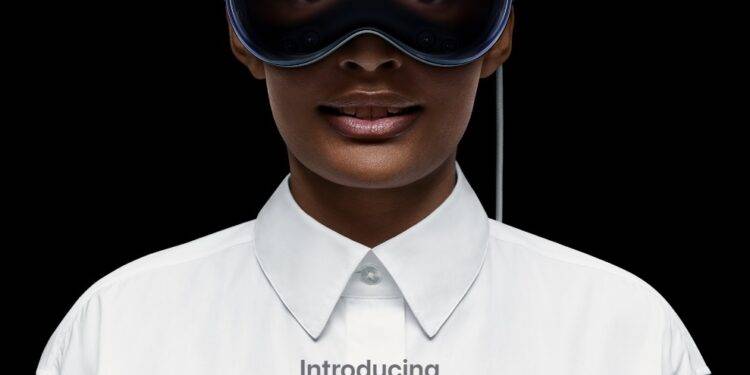
(Photo Source: Apple)
Apple has recently unveiled its highly anticipated augmented reality headset, the Apple Vision Pro, priced at $3499. This move marks Apple’s entry into the AR market, showcasing its ambition to transform AR/VR experiences with innovative design and features. With Vision Pro, Apple aims to redefine the way we perceive and interact with digital content, bridging the gap between the virtual and real world.
Design and Hardware Specs
VisionOS and Key Features
At the heart of the Apple Vision Pro lies VisionOS, a specialized operating system built specifically for augmented reality. VisionOS enables a controller-free interface and intuitive navigation, allowing users to interact with digital content effortlessly. The headset incorporates eye tracking, hand gesture recognition, and voice commands to provide a seamless and natural way to control the device and apps. The Vision Pro also includes accessibility features like Voice Control and Magnifier, making it accessible to visually impaired users and those with motor difficulties.
VisionOS is designed from the ground up for AR, allowing apps to take full advantage of the headset’s capabilities. Developers will be able to create immersive AR experiences that overlay digital objects and information onto the real world in an intuitive and realistic manner. VisionOS and the Vision Pro’s powerful hardware open up a wide range of possibilities for AR applications in industries like education, medicine, design, gaming, and more. VisionOS gives app creators the tools to develop innovative new ways to enhance productivity, provide
Impact on Industries and Consumers
The introduction of the Apple Vision Pro has the potential to revolutionize numerous industries. In the field of education, students can immerse themselves in interactive and immersive learning experiences, transcending traditional textbooks. In medicine, the headset could aid in surgical simulations, medical training, and patient education, leading to improved healthcare practices. Design professionals can visualize and manipulate 3D models with ease, enhancing the creative process. Gaming experiences will be elevated to new heights, with users stepping into virtual worlds like never before.
The widespread adoption of AR/VR technology will undoubtedly change the way people work, learn, and interact. However, challenges such as user acceptance, privacy concerns, and the need for robust infrastructure must be addressed. Nonetheless, the potential use cases for AR/VR are vast, and as technology continues to advance, we can expect even more transformative applications in various sectors.
Conclusion
Apple’s new $3499 Vision Pro AR headset marks their ambitious foray into the AR market. The lightweight and comfortable design features a Light Seal that blocks external light for immersion. The high-resolution 4K display, 120Hz refresh rate, and 110-degree field of view enable realistic AR experiences.
VisionOS enables controller-free navigation using eye tracking, gestures, and voice commands. Accessibility features make it inclusive. VisionOS allows apps to take full advantage of the headset’s capabilities. The Vision Pro has the potential to transform industries like education, medicine, design, and gaming through AR. However, challenges like adoption rates and cost remain.
